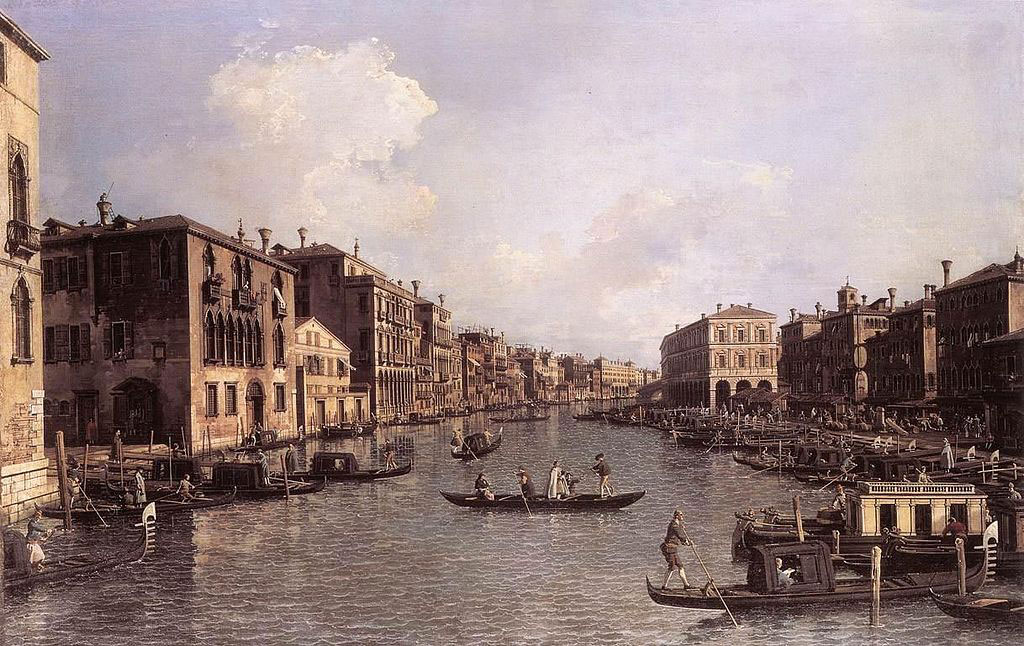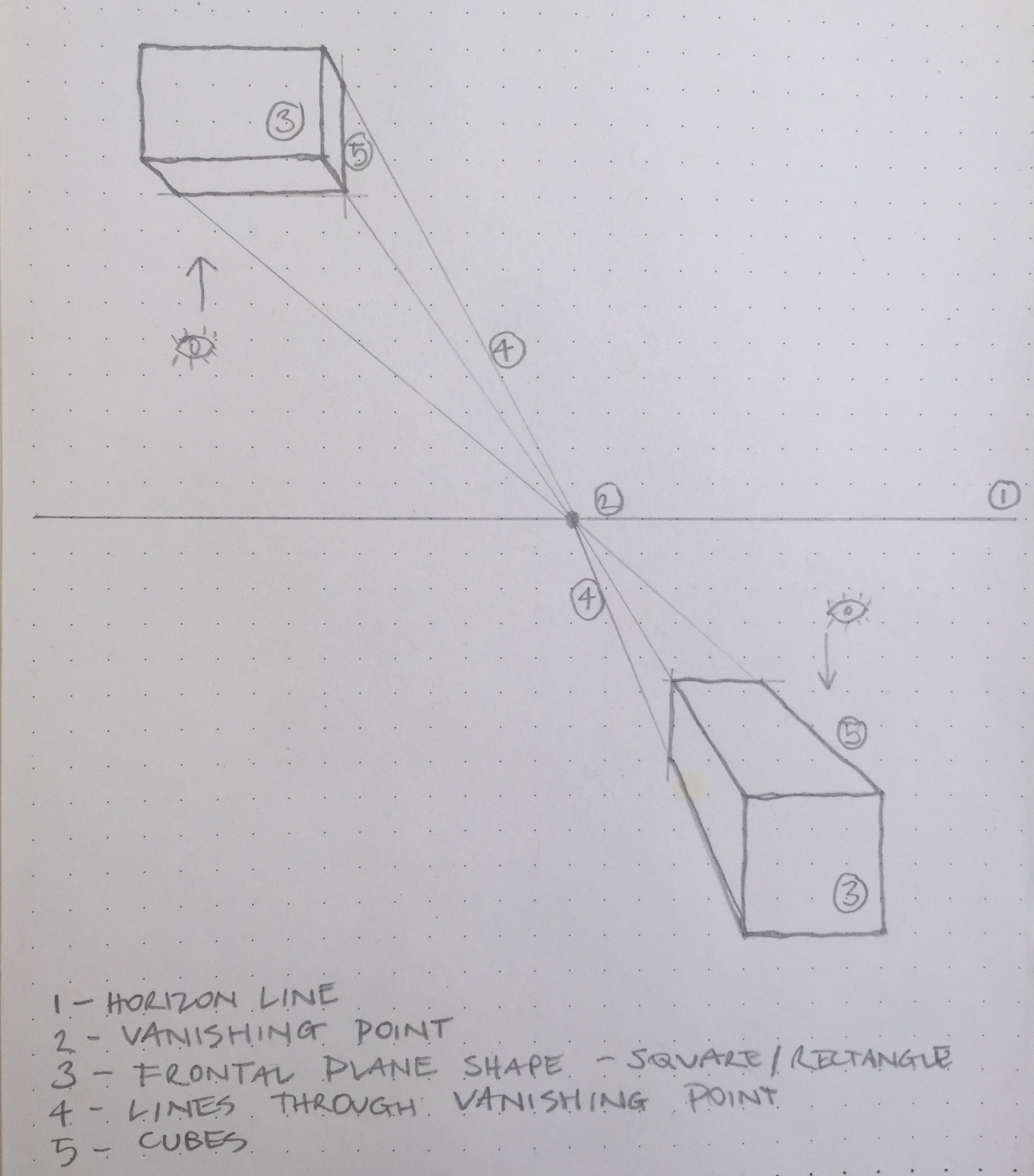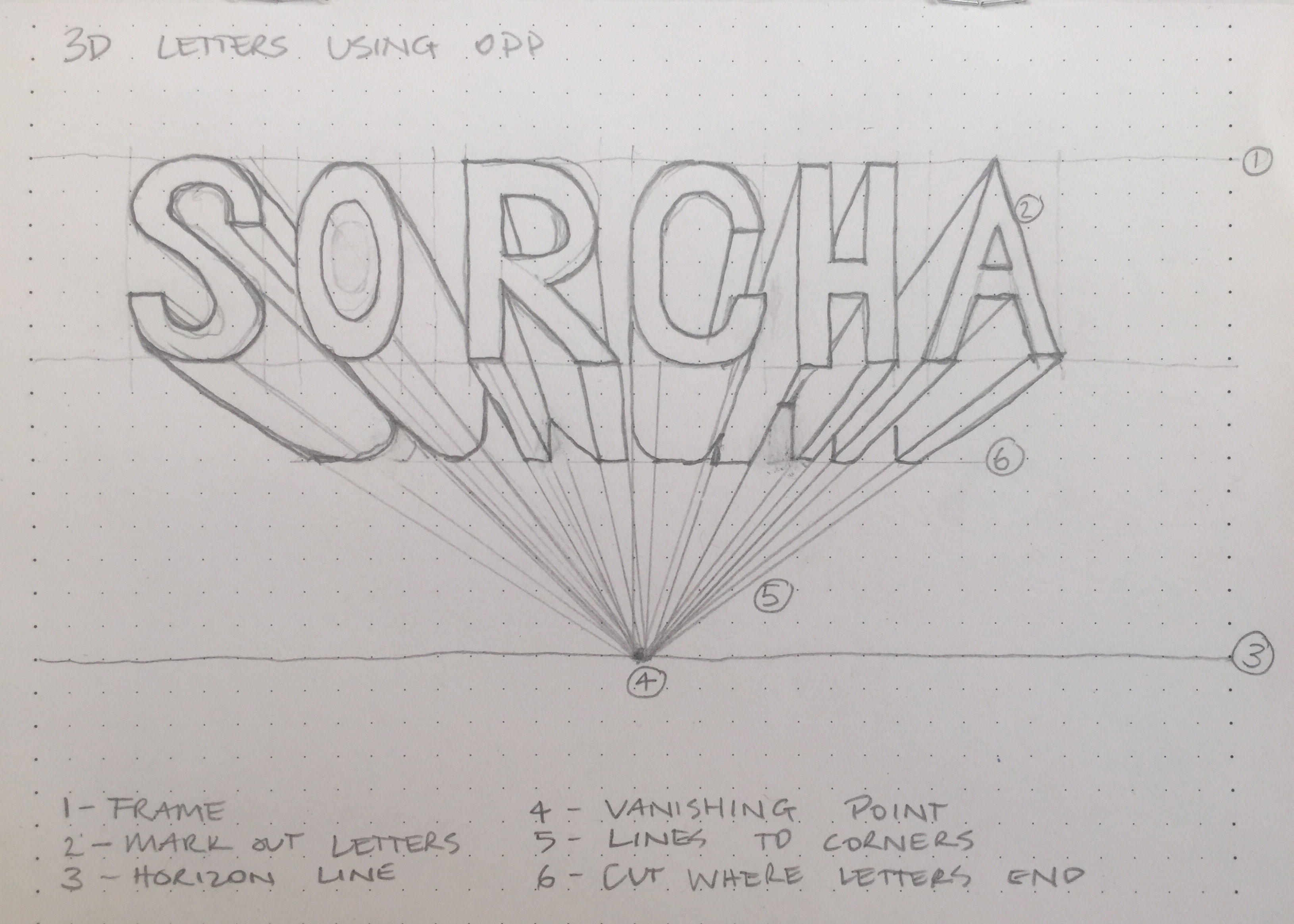Interior One Point Perspective Drawing
One point perspective: a guide for artists

One point perspective is a type of drawing created on a 2D plane that uses one point in the distance from which everything in the drawing is set out. It was first discovered during the Renaissance, and was art's version of going from acoustic to electric, such was the huge and lasting impact it had on the discipline.
Using perspective is a key art technique that allows artists to represent images of rooms, letters, cities or buildings, with depth and volume on a flat surface. The results of a one point perspective drawing can often look impressively complex, but actually, the process is surprisingly simple, provided you follow a few key principles.
The basics can be expanded upon easily, so once you have a solid foundation in drawing one point perspectives, the possibilities are endless. All you need to know, from drawing simple shapes to writing your name in 3D, is outlined below.
To brush up on other key things you need to know about art, see our posts on how to draw, and the Golden Ratio. You can also check out our general guide to how to draw perspective, which covers different types of perspectives.
What is one point perspective?
So, what is perspective? Well, the eye perceives depth in the world all around us because of perspective, but while the world is experienced in three dimensions, it is hard to replicate this on a two dimensional surface, like a piece of paper. This is where the trick of one point perspective comes in. This is a mathematical way of representing a three dimensional image on a two dimensional surface, by using intersecting lines that all go back to the same point in the distance.
One point perspective is a pretty fool-proof way of creating a 3D image, where the image recedes away from you, so things get smaller the further back they go, just like in real life. By using just a vanishing point, a horizon line and a series of straight lines, you can create a realistic and complex rendering, which looks like it's 3D, in a number of simple steps.
In a one point perspective, the image or scene will be viewed face on, meaning that all of the planes facing the viewer are flat. If you wanted to draw an image that wasn't being viewed face on, you would use a two or three point perspective, which has the ability to capture multiple angles, but we're going to keep it simple with just one point here.
Why do artists need one point perspective?

Illustrators, architects and designers of all stripes need to be able to represent their ideas on paper, and often employ perspective to do this. In terms of conveying a potentially complex idea to a client, who might not have any knowledge of the technical processes being employed in any given creative task, it is often useful to be able to show them a rendering of the building, room, object or car so they can get an idea of what to expect from the finished product. One point perspective is an irreplaceable asset in terms of being communicate design ideas to a client. And of course, it's very important in creating art.
One point perspective in art
One point perspective has been the most central tenet of visual art since its invention by Italian artist, architect and all-round Renaissance man Filippo Brunelleschi in the 15th century. It completely revolutionised painting, and no artist can escape the ubiquity of perspective.
Even in the most abstract paintings or drawings, there is often some sort of volumetric reference that will use perspective. One point perspective is seen in paintings by famous artists like Van Gogh, Leonardo da Vinci and David Hockney, to name but a few.
How to draw using one point perspective

Drawing using one point perspective is actually surprisingly easy, once you know what you're doing. There are few basic elements that you need to understand, namely the vanishing point, the horizon line and the frontal planes.
Starting with a piece of paper, a pencil and a ruler, draw a line horizontally across the middle of the page (1). This is your horizon line. Then draw a dot in the middle of the line (2). This is your vanishing point. Now, under the line, draw a square (3). Locating objects above or below the line will determine how the viewer perceives them - below the line, you're looking down on the object, above the line, you're looking up at it. This square is your frontal plane.
Take your ruler and draw a line from the vanishing point to all of the corners of the square (4). This is how you will construct everything in your one point perspective, by taking lines from certain points in your frontal planes back to the vanishing point. To turn your square into a cube, draw a horizontal line and vertical line as far back as necessary (5), and hey presto! You have completed the first step in your mastery of one point perspective. Notice how the shape gets smaller as it gets closer to the vanishing point. This is perspective!
Draw a room using one point perspective

Drawing a room interior relies heavily on one point perspective, and interior designers and architects produce these kind of drawings all the time. Draw a rectangle on the page which will act as the back wall of the room, and then decide where you want the vanishing point to be. This will determine the angle that the room is being viewed from. Let's view it at eye level, so put it two thirds up from the bottom middle of the rectangle. Create the volume of the room by bringing lines from the vanishing point through the four corners of the rectangle.
Laying out a floor pattern is a good way to practice drawing perspective. Divide the bottom line of the rectangle into even segments and bringing lines through them from the vanishing point to the edge of the page, and you will see a pattern emerge. Repeat the steps used in drawing the cube to create tables, chairs, doorways and windows, and you will begin to see how using a series of simple rectangles and squares will allow you to build up elements in a room.
Draw a city with one point perspective

Drawing a cityscape is similar to drawing the inside of a room, in that you will be using simple rectangular volumes to build up your image. Cityscape perspectives can be as simple as a basic sketch, or as complex as a detailed technical drawing, but either way, the rules are the same.
It is handy to use infrastructure, such as roads, streets and street lamps, as these are instantly recognisable elements of a city and can act as a base drawing from which everything else is developed. Again, simple squares and rectangles can form windows, balconies, front doors, pavements and road markings, and these drawings are a great way to whet the creative appetite of budding city painters or aspiring architects.
Draw letters with one point perspective

Ever wanted to draw your name in 3D? Well now, with the one point perspective under your belt, you can! Drawing block letters is actually really straightforward, but involves perhaps a little more preparation because you need to set out the letters first.
To do this by hand, which is a great way to learn, get some graph paper and mark out the forms of the letters. Then bring lines from the corner of each letter through the vanishing point, and draw a horizontal line where you'd like the letters to end. Curves should be done by hand using the graph paper to achieve the correct proportion. Using colour can make the letters stand out more, so give this a go once you're happy with them.
You can also try to write your name using one point perspective. This exercise is great for graphic designers wanting to get back to basics with typography, and is often how typographers thrash out designs for fonts.
Read more:
- Top speed painting tips (that work for speed drawing too)
- 20 free ebooks for designers and artists
- Lino printmaking: an introduction
Sorcha O'Higgins is a collage artist and freelance writer. With a background in architecture and urban art, she works mostly with existing analogue material to create both abstract and figurative work. Her collages use bold colours, patterns and contrasting elements to create playful, direct and sometimes brazen images.
Related articles
Interior One Point Perspective Drawing
Source: https://www.creativebloq.com/features/one-point-perspective
Posted by: casianolous1944.blogspot.com

0 Response to "Interior One Point Perspective Drawing"
Post a Comment